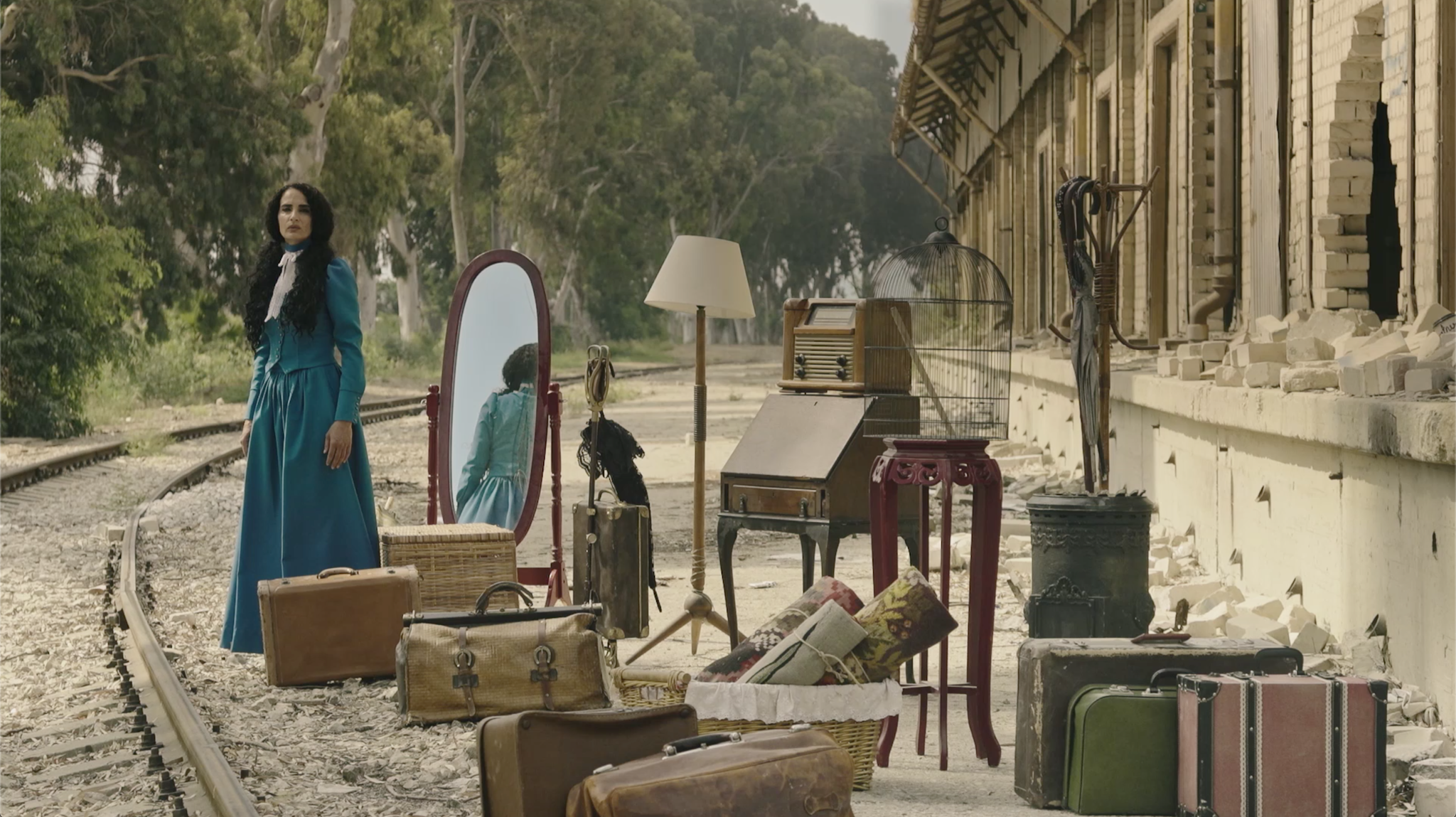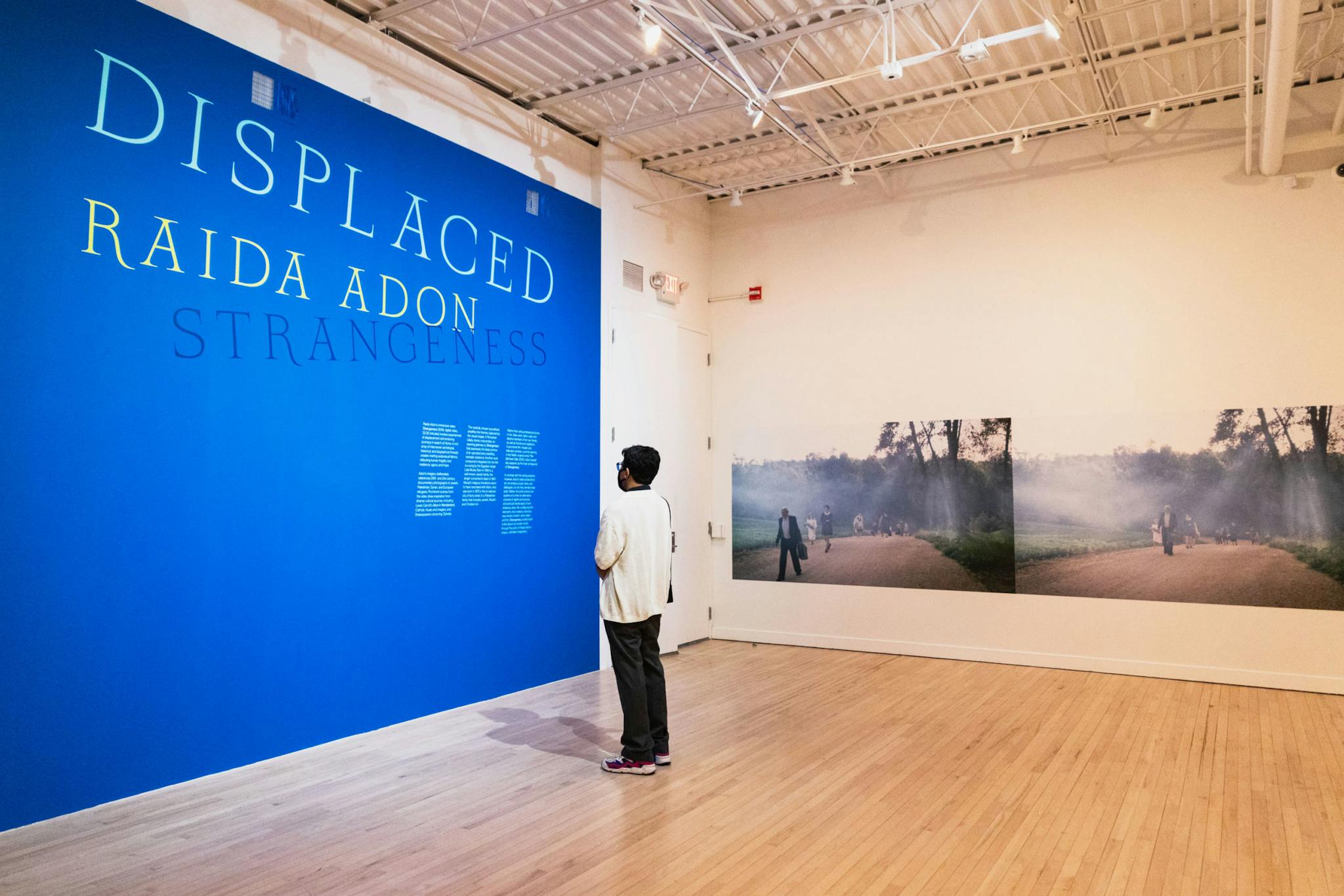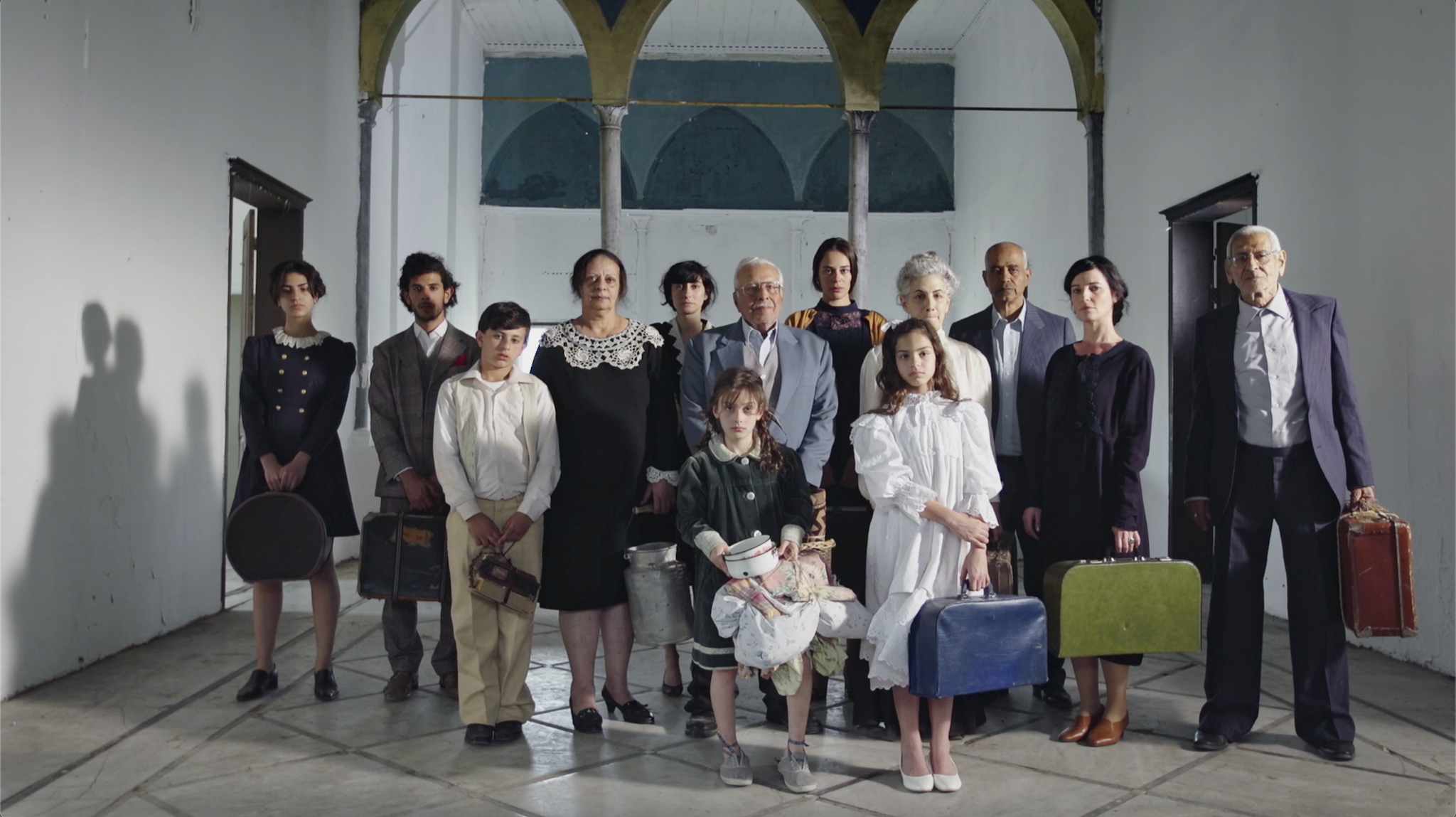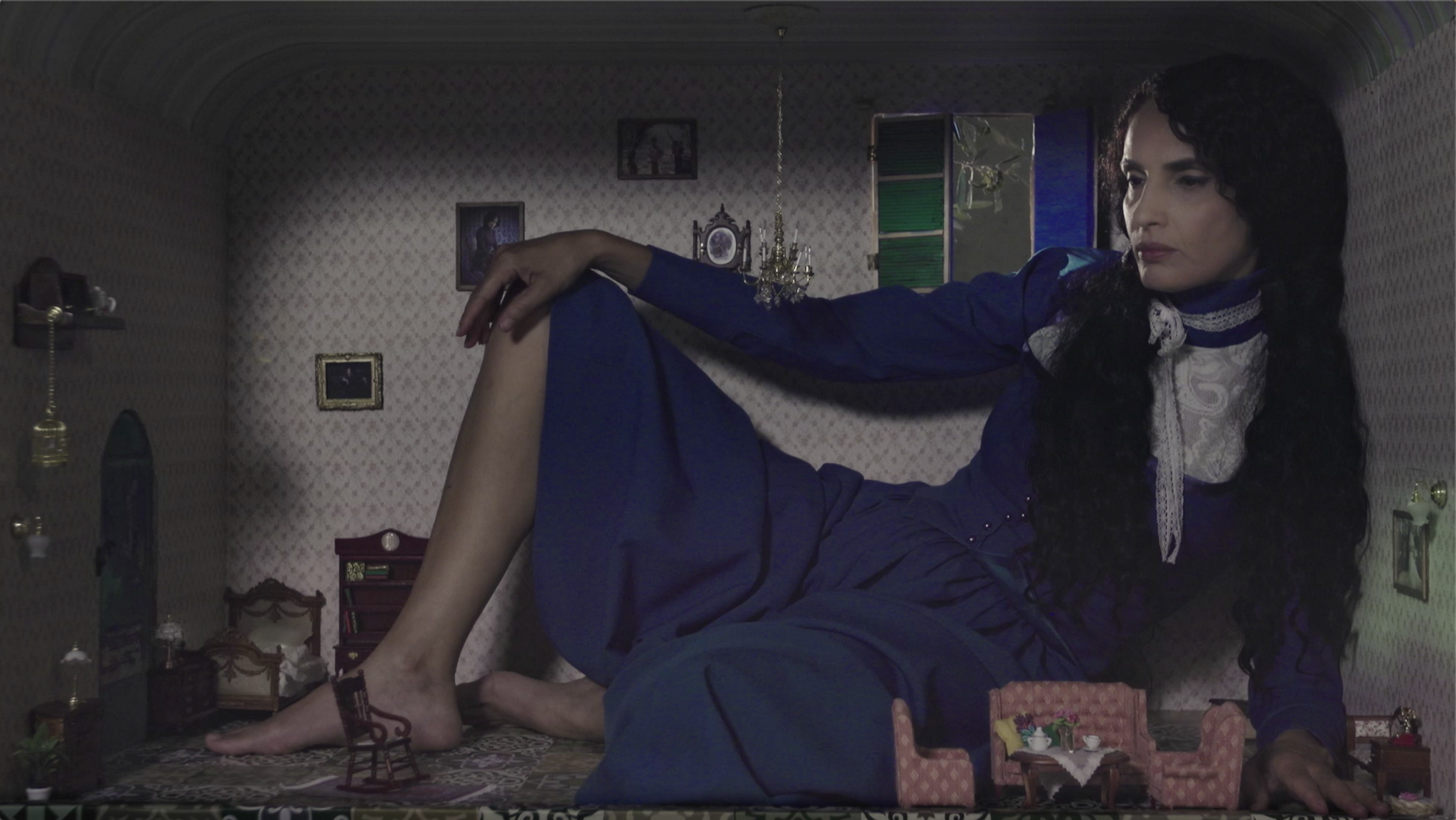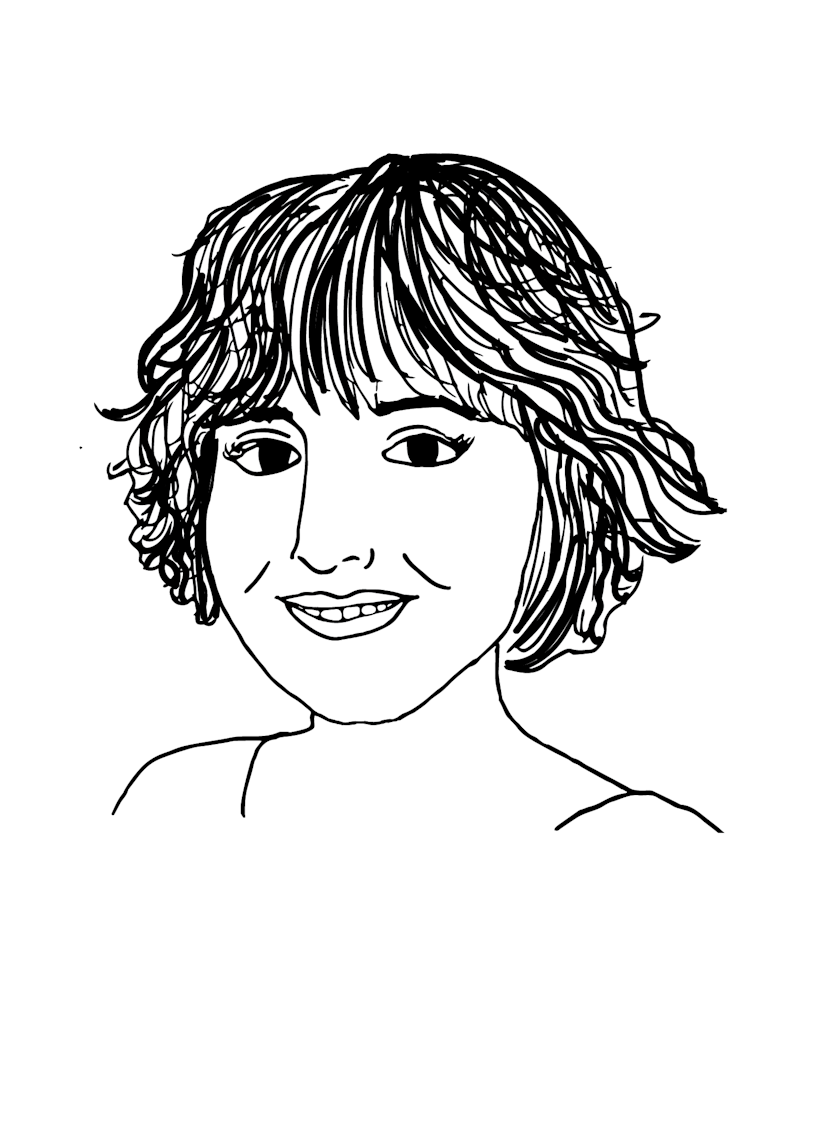With “Displaced: Raida Adon’s Strangeness,” Palestinian Israeli artist Raida Adon and the Rose Art Museum’s Henry and Lois Foster Director and Chief Curator Gannit Ankori have created a space that enables viewers to contend with the quieter traumas of the refugee experience—the waiting, the hoping, the humiliations—and our responsibility to those that suffer them. Tucked into the lower level Mildred S. Lee Gallery, the show presents Adon’s 33-minute film, Strangeness. While the empty, airy antechamber offers context for the piece, it’s the darkened viewing area that draws you in, sparsely arranged with a few pairs of wooden chairs to provide both seating and space for contemplation.
Adon is an artist, filmmaker, actor, and activist. She was born and raised in Acre, an ancient harbor city in western Israel that had, for centuries (though maybe no longer), been heralded as the archetype for peaceful coexistence between the Jewish, Muslim, and Christian peoples that predominately populate the region. Born to a Jewish father and a Muslim mother, with Christian family members, Adon is deeply influenced by all of the cultures of this region; her practice draws from each of them. Her work explores the tensions of multiple identities, as well as who we become when we slip through the cracks of expected personas.
In Strangeness, that fall sends us down the rabbit hole. Consistent with most of her previous video work, Adon takes on the role of our protagonist. Here, she’s often found in the blue dress of Carroll’s Alice, though instead of wandering about a marvelously peopled wonderland, she’s questing alone through a liminal dreamscape. Throughout the film, she is never quite at home in the world she occupies. Like Alice, she is often quite literally the wrong size, as in an especially striking scene when she is contained within her suitcase, which is also a replica of her childhood home. The film is full of references to religious fables and traditional folklore, with allusions to other classic characters from Western literature who cannot fit and do not belong, strive though they might. The tiny soldiers grappling her enormous sleeping body in one scene, for example, recall Swift’s Gulliver, while in another—with a right-sized Adon submerged and softly struggling—we find a clear callback to Ophelia.
Literary references and uncanny imagery are key to Adon’s work, and have been since her first exhibited film, Fasatine (2001). In conversation with Ankori following a live performance on April 13, 2022, she described the importance of stories to both her artistic process and to her very survival as a Palestinian woman in Israel. Fairy tales, dreams, and imaginary territories offer safer realms to inhabit when one’s real existence is unstable. Perhaps this preoccupation with world-building explains Adon’s hands-on approach to her work. She eschews post production as much as possible, and instead constructs all of her intricate sets, even that marvelous suitcase-house, herself. She is similarly involved in the casting process; while she is a professional actress, currently starring in The Girl from Oslo on Netflix, her films otherwise include friends, family, and acquaintances recently met at the market.
In Strangeness, this disparate cast portrays a group of refugees, elegantly dressed, carrying the spare paraphernalia of displacement: suitcases, baskets, lone chairs. We follow them through a series of scenes, through a forest, along a snaking path, resting, exhausted, and expectant in a deserted building. When they aren’t moving, they are arranged in artful tableaus, often making direct eye contact with the viewer. In breaking the fourth wall, they bring immediacy to a tale that in many ways, from the clothing, to the artifacts, to the very, well—strangeness—feels outside of time. In meeting our gaze, they remind us of our role in the refugee experience, a relentless crisis that is, sadly, ever present, and ever urgent.
They could be anyone. The primary reference material for this diasporic portrayal are two photos depicting Jews being evicted from Tel Aviv in 1917 and the Palestinian expulsion from Tantura in 1948, though Adon was careful not to include any identifying markers. As she said to Ankori, they could be Syrians; they could now, of course, be Ukrainians.
“Displaced” reminds us that, regardless of the religion, race, or creed of those affected, the refugee experience is both singular and communal, leaving lasting scars that affect us all, which pass on from generation to generation. With Strangeness, audiences are exposed to this cyclical trauma, but also stubborn hope and the determination to persevere. In the last shot, Adon gazes out to sea, her boot a tiny boat. While she is once again all out of size, I am no longer reminded of Alice, but of Odysseus. I fear we’re no closer to home.
“Displaced: Raida Adon’s Strangeness” is on view at the Rose Art Museum at Brandeis University from February 17 through July 24, 2022.
